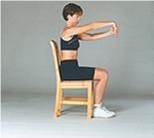
For many of us, jumper cables and a snow scraper is the extent of our car safety kit. When was the last time you peered in your trunk and evaluated your kit?
Since 2006, the Government of Canada (in collaboration with the Canadian Red Cross, St. John Ambulance and the Salvation Army) began its 72 Hours campaign. The campaign helps Canadians '...cope on their own for at least the first 72 hours of an emergency, enabling first responders to focus on those in urgent need.'
Here's what Public Safety Canada recommends as a basic emergency kit for to keep in your car:
![]() Food that won't spoil, such as energy bars
Food that won't spoil, such as energy bars
![]() Water in plastic bottles so they won't break (change every 6 months)
Water in plastic bottles so they won't break (change every 6 months)
![]() Blanket
Blanket
![]() Extra clothing and shoes
Extra clothing and shoes
![]() First aid kit with seatbelt cutter
First aid kit with seatbelt cutter
![]() Small shovel, scraper and snowbrush
Small shovel, scraper and snowbrush
![]() Candle in a deep can and matches
Candle in a deep can and matches
![]() Wind-up flashlight
Wind-up flashlight
![]() Whistle in case you need to attract attention
Whistle in case you need to attract attention
![]() Roadmaps
Roadmaps
![]() Copy of your emergency plan and personal documents
Copy of your emergency plan and personal documents
The Get Prepared campaign also recommends keeping these inside your trunk:
Click here for the above information in checklist format.
Visit Canada's Get Prepared campaign and get your family ready in case of an emergency.
Do you have a first-aid kit at home? Here's what you should keep in it.

Our clients often ask how much they should expect to pay in auto maintenance and repair (on top of other auto-related costs such as finance/lease charges, insurance and fuel). A good rule of thumb that we suggest to set aside is approximately $100 per month. Some years you will only need to do preventative maintenance (such as oil changes or fluid services), other years you may need costly repairs such as brakes, tires, tune-ups or timing belt replacements. Keep in mind that this guideline ($100/month) is an average, some years you'll spend less and some years you'll spend a lot more.
A JD Power & Associates study released in August 2011 found that annual spending on vehicle maintenance declined due to drops ‘…in the average amount spent per service visit and [in] the number of service visits.’ The annual spending decreased on average $23 per vehicle (an overall industry contraction to $8.4 billion in 2011 compared to $9 billion in 2010).
The overall trend in our industry is extended service intervals with more maintenance items added to the usual oil change service (e.g. other filter changes, fluid service, etc). It’s important to note that with longer time in between service visits, there is less opportunity for us to monitor the vehicle and the study indicated that an oil change visit ‘…may now include a full tune-up, fluid flush and a recommended replacement of a part.’
This year's study did not specify on average how much Canadians spent during the year though last year’s report noted an average of $287 per visit per vehicle.
Whatever amount you choose is a personal decision and depends on your specific situation. Stick with the amount you choose to budget for and review it on an ongoing basis.

On some days it feels like I spend more time in the car than I do outside. I’ll be the first to admit that I don’t have proper posture (I couldn’t make it as an English guardsman) and sitting for long periods in the car doesn’t help. After a day of contorting my body under dashboards, lifting tires and reaching over engines to get at spark plugs, my body needs to keep up with my energetic kids. Here are some exercises my chiropractor, Dr. Mae Chan of Advanced Health Centre, suggested for me to keep strain & fatigue at bay. You can do these while waiting at a traffic light, waiting to pick up your kids from school or waiting for your girlfriend who’s running late for your lunch date!
![]() Holding the steering wheel in the 10 and 2 o’clock positions, roll your shoulders forward and backwards. Repeat several times.
Holding the steering wheel in the 10 and 2 o’clock positions, roll your shoulders forward and backwards. Repeat several times.
![]() Hold one arm out in front of you, palm down. Grasp fingers with opposite hand and gently bend wrist down as far as comfortable. Hold for 15 seconds. Repeat for other wrist.
Hold one arm out in front of you, palm down. Grasp fingers with opposite hand and gently bend wrist down as far as comfortable. Hold for 15 seconds. Repeat for other wrist.

![]() Hold one arm out in front of you, palm down. Grasp fingers with opposite hand and gently bend wrist back. Hold for 15 seconds. Repeat with other wrist.
Hold one arm out in front of you, palm down. Grasp fingers with opposite hand and gently bend wrist back. Hold for 15 seconds. Repeat with other wrist.

![]() Sitting tall with shoulders relaxed down and back. Tip head straight sideways, ear to shoulder, as far as comfortable. Hold for 15 seconds. Repeat on both sides.
Sitting tall with shoulders relaxed down and back. Tip head straight sideways, ear to shoulder, as far as comfortable. Hold for 15 seconds. Repeat on both sides.

![]() If you’re driving for long periods, remember to take breaks periodically. Stop the vehicle and get out to stretch and walk around.
If you’re driving for long periods, remember to take breaks periodically. Stop the vehicle and get out to stretch and walk around.
Talk about multi-tasking! Get some stretches in while you’re waiting in the car and your neck, back & legs will thank you.